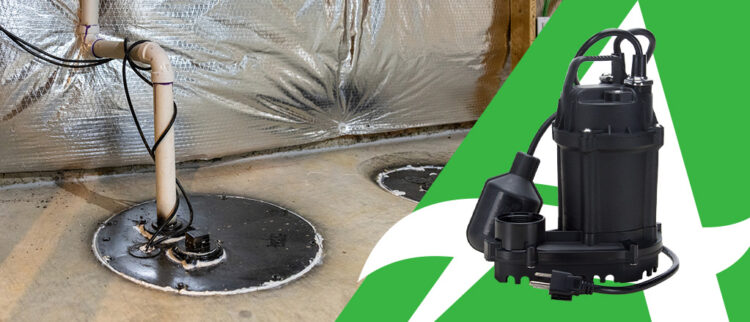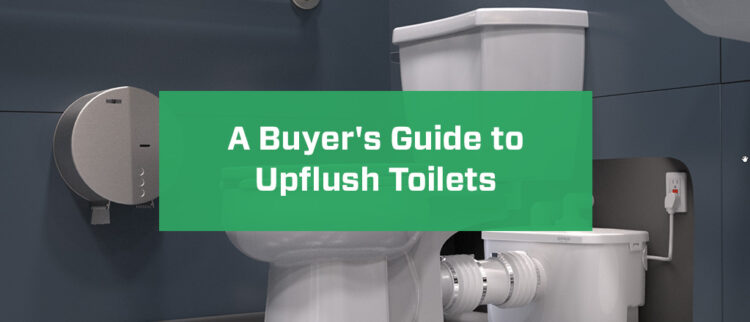Your sump pump is an important part of your plumbing system that removes excess water from the sump basin. The best time to make sure your sump pump is ready is before you need it. With flooding and summer storms still a long ways off, here are a few ways you can get your sump pump ready before summer flooding and storms.
Check for Possible Damage
Just like any other appliance, sump pumps can wear out over time and malfunction. Thankfully, there are some common signs of damage that are easy to notice.
Noisy or Vibrating Pump
If your sump pump makes a lot of noise or vibrates when it’s running, it’s damaged and will need repair or replacement. Excessively loud sounds coming from the pump can indicate worn parts or be a sign of something wrong with the motor. One common issue that causes vibration or a grinding noise while running is a jammed impeller, usually caused when something was sucked up by the pump. This will cause future pump problems if not addressed, so be sure to remove any debris trapped inside.
Pump Runs Nonstop
If your sump pump is running all the time, it could mean there is a mechanical issue with the float switch. This type of mechanical problem can be fixed if it’s the result of a pump shift. Pump shifts happen when the motor vibrates and moves the float switch out of place. Tangled or jammed float switches confuse the system and make it run nonstop. If you’ve noticed a constantly running sump pump, it may also be due to its size. Sometimes sump pumps are too small for the amount of floodwater they need to displace, so it’s best to fix this before a heavy rain season.
Visible Rust or Clog
If you see a brown rust-like substance in the pump, it could be iron bacteria. While it won’t harm your health, it can damage your plumbing and sump pump. Visible clogs will also cause issues down the line, so you will need to clean them out if you can. To reduce the amount of summer sump pump maintenance you need to complete in the future, use a filter to help keep sediment and other materials out.
Perform Maintenance
You can perform basic sump pump maintenance without the help of a plumber, but you may still want to consult an expert if you encounter any problems.
Remove and Clean the Pump
You should clean the pump about once a year. Turn the sump pump off and then disconnect and remove the pump. Carry it outside in plastic or a large container to prevent spills. Use a hose to rinse it off and clean out any stuck debris. Then, leave it to dry.
Clean out the Sump
After you remove and clean the pump, you’ll need to clear the basin. Drain any standing water from the sump pit and clean out any debris. When everything is clean, reconnect the pump and plug it in.
Make Sure It Works
Test your sump pump every few months and as part of summer pump preparation. All you need to do is add a bucket of water and watch to see if it activates correctly. If it doesn’t, you may have to adjust the float. Once you’ve adjusted it, try testing it again.
Replace Old Sumps With Star Water Systems
A functioning sump pump is needed to protect your home from heavy rains and flooding damage. Without one, water can cause flooding, lead to mold and mildew growth, even damage your electrical system and cause electrical fires. If your pump is more than seven years old, you may need to consider a replacement.
If your unit is too old or damaged to handle summer storms, replace it with a quality sump pump from Star Water Systems. We’ve been a trusted water supply product provider since 1866, and we’ve spent decades curating a comprehensive selection of high-quality water systems. We pride ourselves on offering efficient and durable products that you can rely on. Find a dealer near you today!



